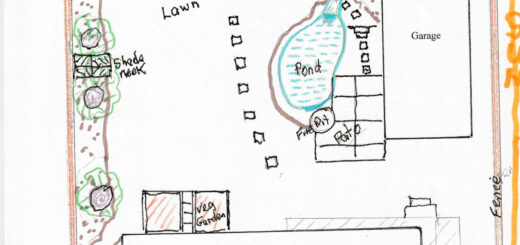Naturescape Part 2. Bird Feeders.
Bird Feeding Station.
Sparrows and juncos usually feed on the ground. In my opinion, seeds scattered widely on the ground are an essential means of attracting birds. The reason is that House sparrows’ constant activities attract other watching species.
Black sunflower seeds, peanuts, and Suet are the most sought-after foods. A mixture of seeds will attract the greatest variety of birds, but do not make food too easy to obtain. By offering different seeds in feeders that are some distance apart. Black oil sunflower seed appeals to the most significant number of birds. Choosing shop mixtures containing sunflower seeds, millet, and cracked corn is a cheap option.
A Personal note. Many authors strongly advise against any (invasive and noxious) birds or plants. To an extent, this is true, within a human lifetime. Yet I need to add that all lifeforms, whether microscopic, plant or animal, have an important role in the recycling of essential nutrients to life, and all have their place in creating high diversity.
Finches and Nuthatches feed in shrubs, and chickadees, titmice, and woodpeckers feed in trees. Eventually, eight different feeders were hung close to our picture window, each tethered to the ground owing to the high winds we experience here.
I prefer not to use cracked corn because few birds will take this hard food.
The seed mixture and peanuts are better stored in a milk container for easy pouring. A brewer’s funnel will make this easier. Occasionally, you may wish to rake up the discarded seed husks as they become unsightly on the lawn.

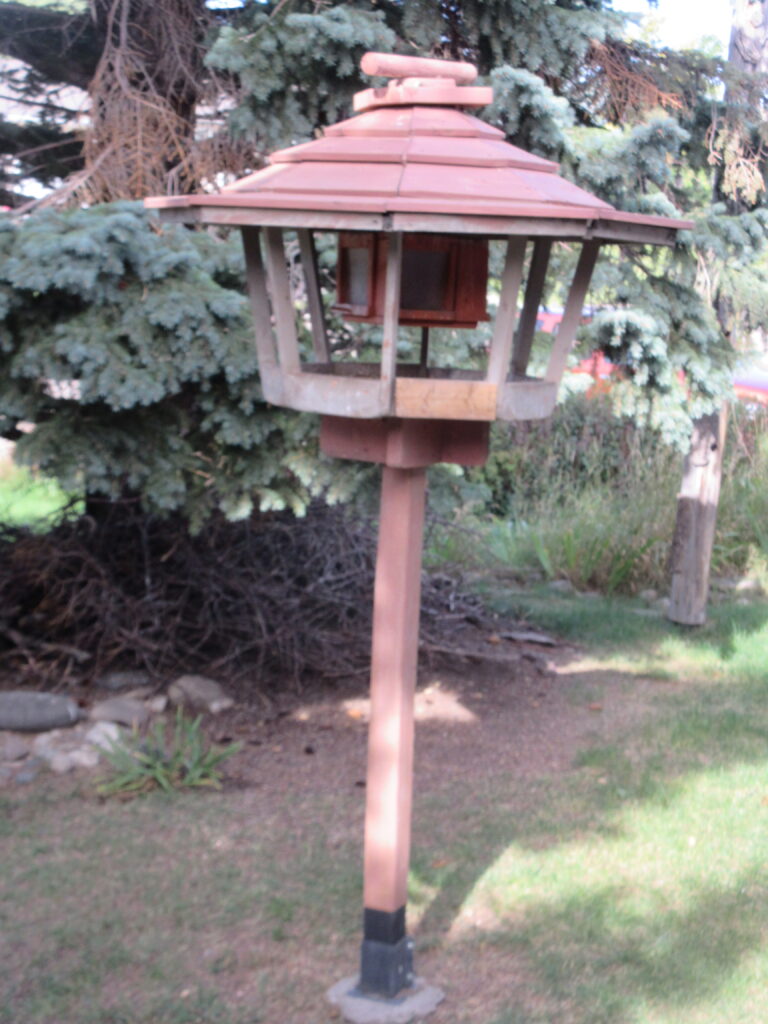
The first project was to encourage the birds to visit our feeding station. This was assembled in our front garden, facing the open countryside. First was the building of an English-style bird table that could provide food even during the depths of winter. Limit the amount of food to 2 days to prevent fouling. This arrangement consists of a 2-foot hexagon-shaped table with a pitched roof and four seed hoppers capable of providing food during deep snow. You may like to position your bird feeders within sight of a window.
I prefer tube feeders, which help keep the seeds out of the elements, guarding against spoilage. With no platform, birds can’t foul the seeds with their droppings. Many feeders have a too-narrow perch made of metal, which is not ideal. A length of wire inside a plastic tube will work.
Multiple birds often visit the same perches repeatedly and can pass diseases, so cleaning tube feeders regularly with a dilute bleach solution is important.
With plastic tube feeders, squirrels can cause considerable damage by gnawing to widen the openings. Look for a feeder design with an outer cage that keeps squirrels from reaching in to get at the seeds.
Some data from Aubin’s website. www.audubon.org/news/11-tips-feeding-backyard-birds
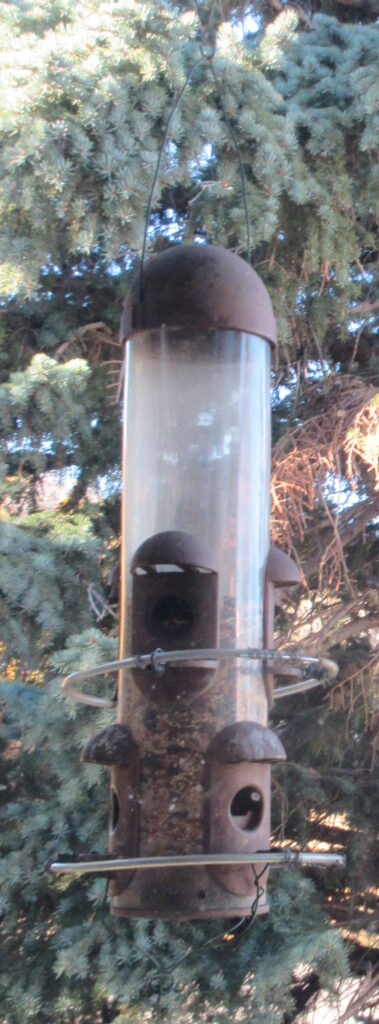
A fun way of presenting seeds was to install a small feeder on the back of our house number plate. In this way, passersby would get a preview of a naturescape garden.
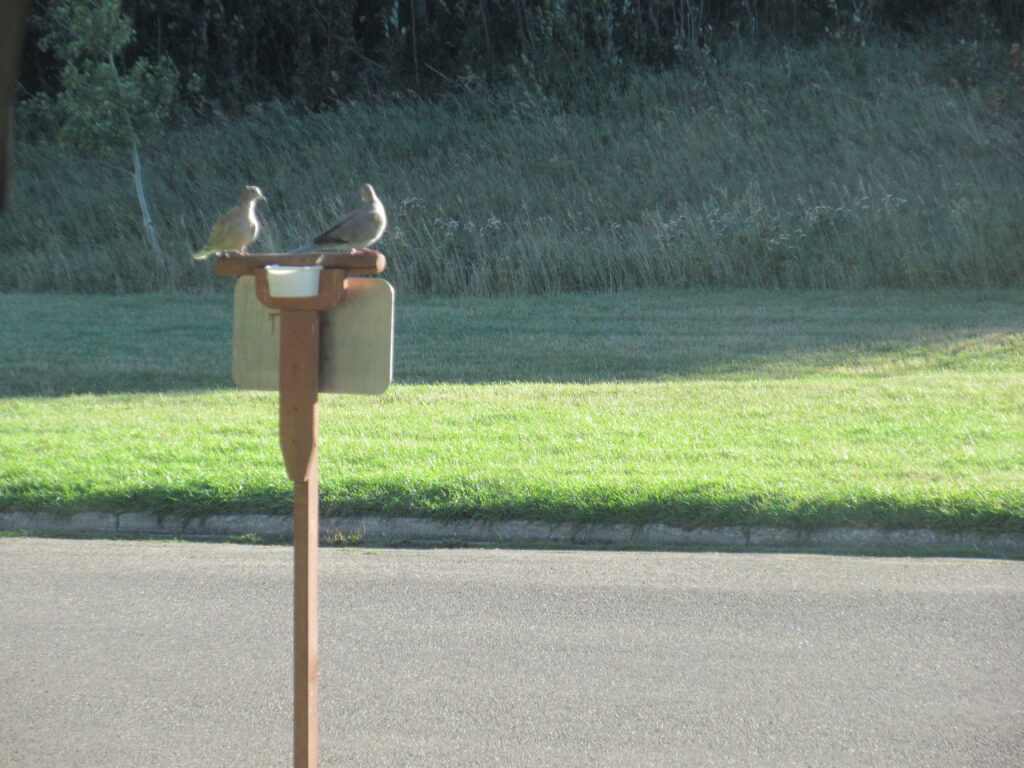
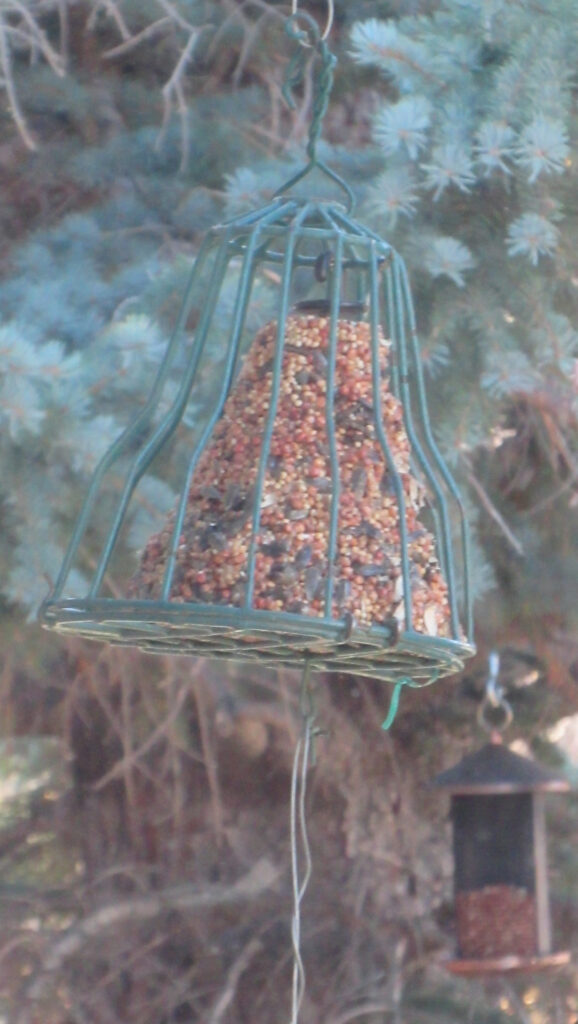
A long-lasting means of presenting seed is with a mixture of seed and suet, which has been compressed into a bell-shaped form. A wire housing can be purchased to house this shape.
During the summer try a mixture of peanut butter and seed.
Insectivore birds are another story, although many will take seeds, particularly black sunflower seeds and peanuts. Yet their natural source of food is insects. Nuthatches, Chickadees, Blue Jays, and Woodpeckers do well with whole peanuts threaded onto a wire with a wood base as a landing platform.
Another way to offer peanuts is with a Woodpecker pole. This is an old fencepost some four feet long, drilled throughout with quarter-inch holes to take a whole peanut.
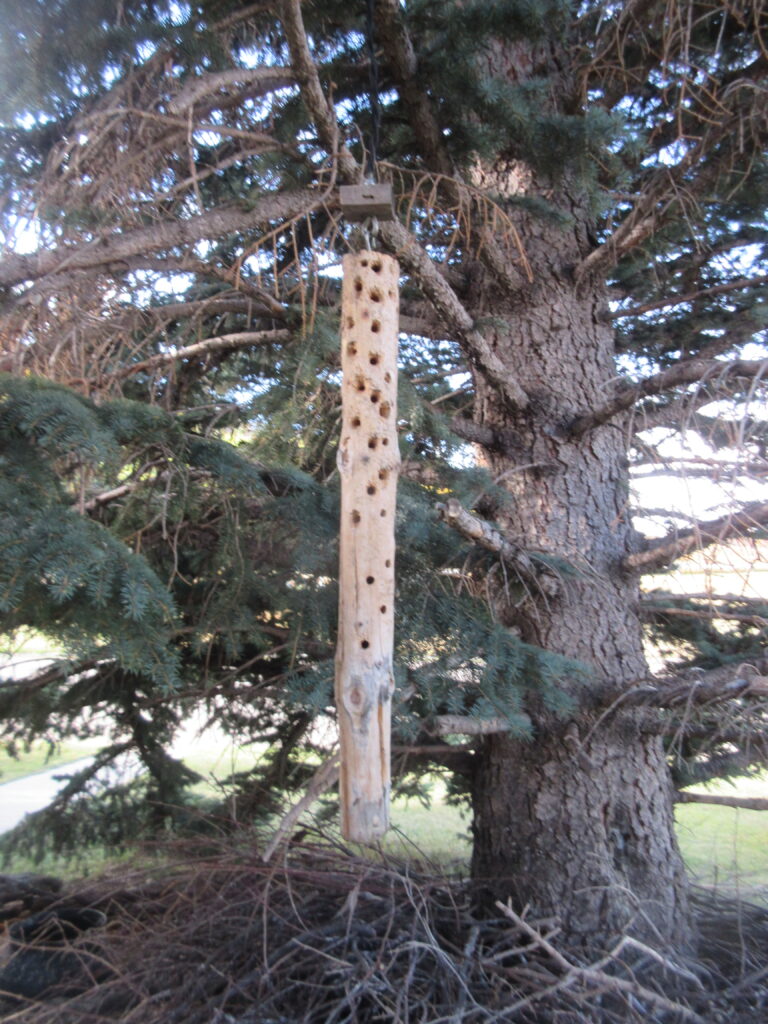

Many species of birds love peanuts, and crushed peanuts dispense well in a fine mesh tube feeder. Peanuts are a good source of essential nutrients such as proteins and fats. Making them an attractive additional food source for birds. Peanuts can also be offered to birds combined with suet cakes, providing a high-energy food source, especially during colder months. Smearing unsalted peanut butter on a pine cone and rolling it in birdseed makes a tasty treat for birds that can be hung outside.
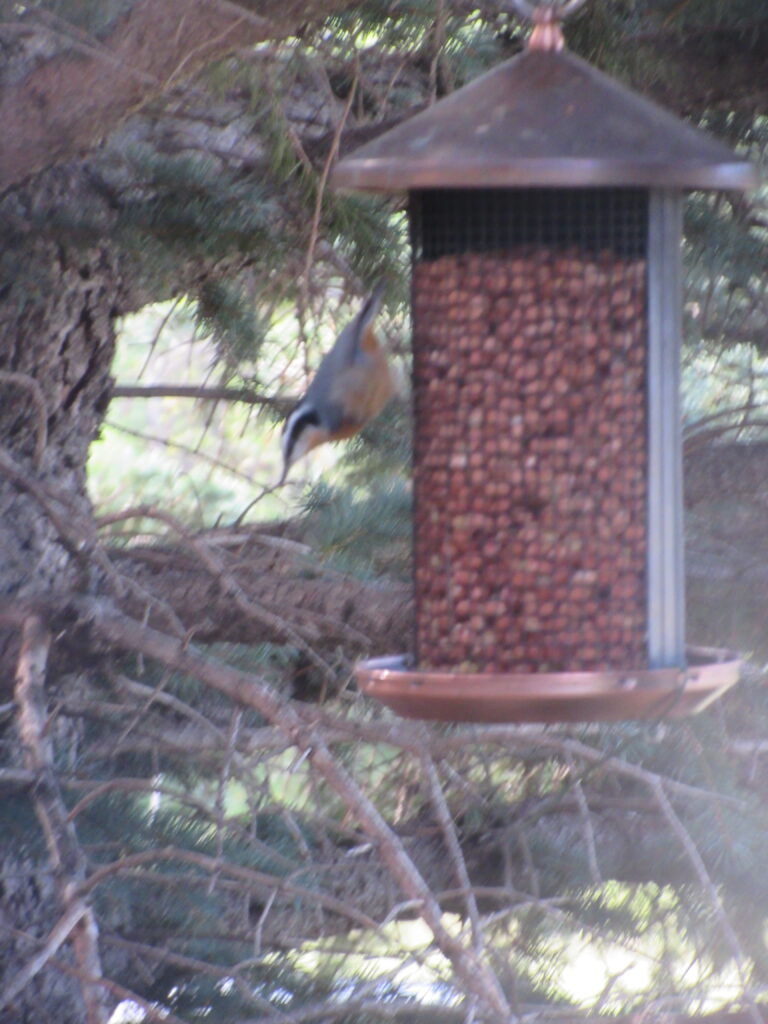
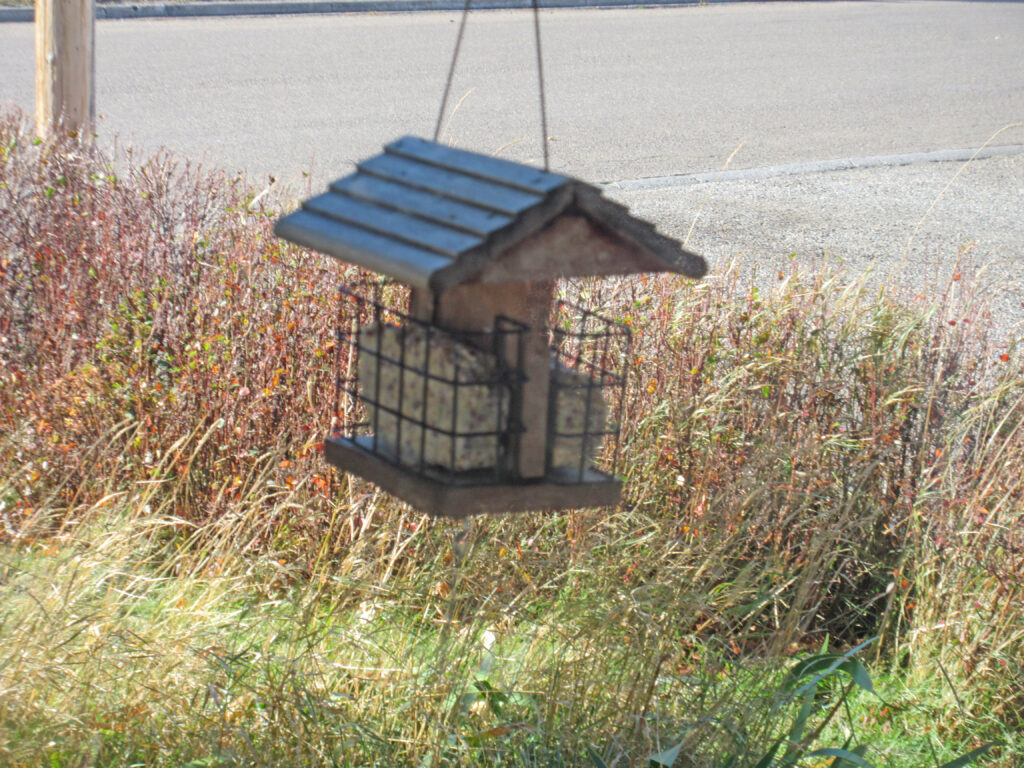
Talking about suet, it is the perfect bird food for winter when birds’ natural food sources start dwindling. It is also helpful in early spring when the food supply is low, and many birds are building nests.
Your easy option is to buy ready-made blocks. I often purchase rare suet from our local country butcher, rendered by cooking, making it less prone to melting and spoiling. It is usually rated as safe to use in temperatures as high as 100°F.
Melt the raw suet in a saucepan until completely liquid. Remove from the heat and let sit for several minutes. Stir any ingredients you may wish to add, pour into small plastic containers and place in the fridge until stiff and retain their shape.
Lawn.
An area of short grass or lawn is beneficial to ground-feeding birds such as Robins, Northern Flickers, Doves, Magpies, and Finches.

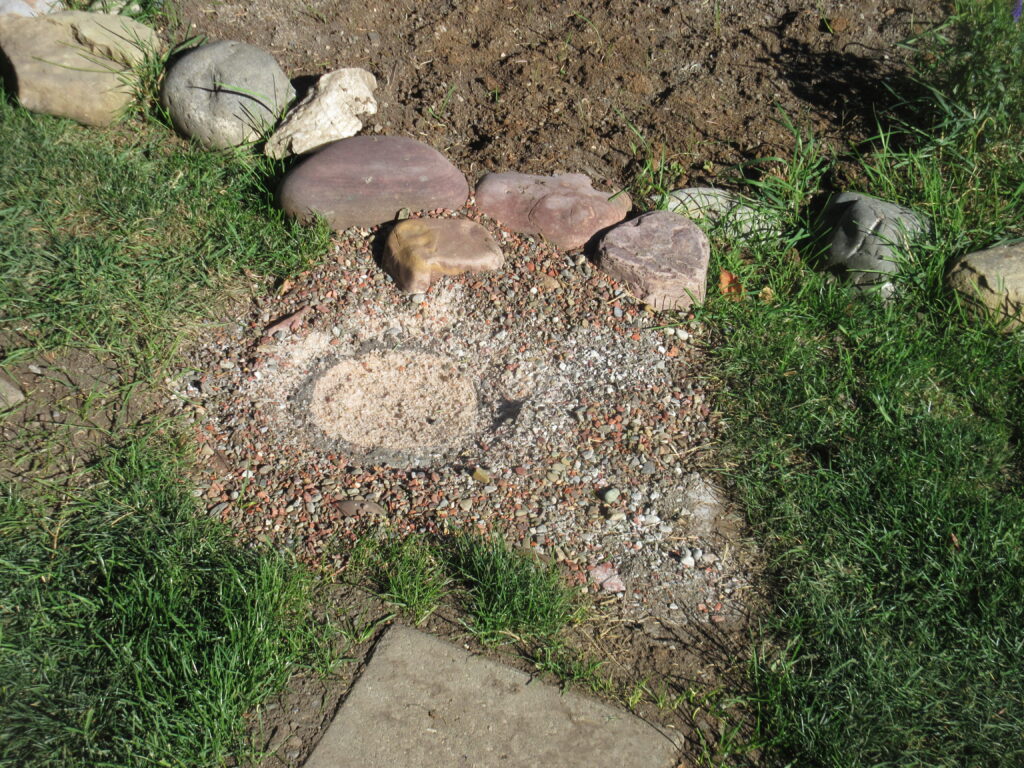
Another form of attraction to a few birds, butterflies and wasps is that of a salt lick. This was constructed from a 4-litre ice cream container set into concrete. Provide some drainage at the bottom to remove excess water.
The next project is to supply water, Please visit “Water for Birds.”
